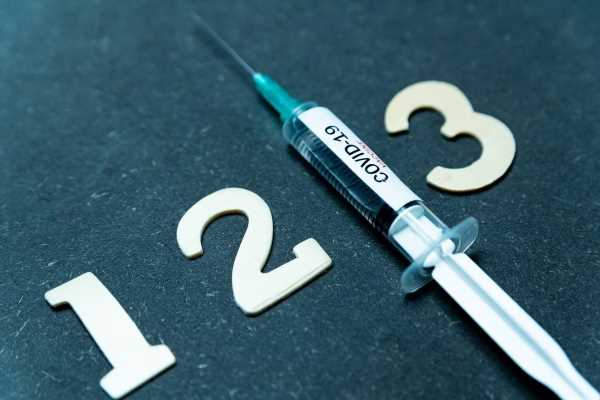In a recent study posted to the medRxiv* preprint server, researchers compared the immunogenicity and safety of the protein-based heterodimer vaccine (PHH-1V) and BNT162b2 coronavirus disease 2019 (COVID-19) vaccines.

Background
A severe acute respiratory syndrome coronavirus 2 (SARS-CoV-2) vaccine called PHH-1V has been tested to be well-tolerated and safe among young, healthy adults. Further research is necessary to understand the efficacy of PHH-1V against COVID-19.
About the study
In the present study, researchers reported the immunogenicity and safety of a COVID-19 PHH-1V heterologous booster compared to a BNT162b2 homologous booster at 14 and 98 days after COVID-19 vaccination.
This non-inferiority and double-blind phase IIb trial assessed the safety and immunogenicity of PHH-1V and was performed in 10 centers located in Spain. Individuals eligible for the study were 18 years and above and had a history of two doses of the BNT162b2 COVID-19 vaccine between 182 and 365 days after the second vaccine dose. The eligible participants also had a body-mass index (BMI) from 18 to 40 kg/m2, were polymerase chain reaction (PCR)-negative for SARS-CoV-2 at the time of study enrolment, and were willing to avoid vaccinations with other vaccines four weeks before or after COVID-19 vaccination.
The team randomly assigned participants in a 2:1 ratio to administer a third vaccine dose with either the BNT162b2 vaccine or the PHH-1V vaccine. The participants were also allocated for treatment with an interactive response technology (IRT). The team categorized the allocation sequence according to the age group of the participants, with 90% of the subjects in the 18 to 64 years cohort and 10% in the 65 years and above cohort.
Study visits were set on days zero, 14, 28, and at three, six, and 12 months for eligible participants vaccinated on the day zero visit. The participants were vaccinated with BNT162b2 and PHH-1V. The team observed the first 30 individuals for 60 minutes, followed by phone surveillance for the next 72 hours. The rest of the participants were monitored for 30 minutes, followed by telephonic contact on day 7.
The antibody neutralization (NAb )titers were tested by the inhibitory concentration 50 (IC50) through a pseudovirion-based neutralization assay (PBNA). Moreover, immunogenicity against the viral spike glycoprotein was analyzed using the anti-SARS-CoV-2 spike immunoassay. An infectious SARS-CoV-2 neutralization test (VNA) was also employed to assess the NAb titers estimated as inhibitory dilution 50 (ID50). Furthermore, geometric mean fold rise (GMFR) and geometric mean titer (GMT) were estimated for every parameter.
Results
A total of 862 individuals were screened, among which 522 adults received PHH-1V, and 260 received a BNT162b2 booster vaccine dose. Additionally, the modified intention-to-treat (mITT) cohort included 504 PHH-1V and 248 BNT162b2, and the safety protocol (SP) cohort had 513 PHH-1V and 252 BNT162b2, and the immunogenicity population (IGP) had 503 PHH-1V and 246 BNT162b2 participants.
The team noted that for the SARS-CoV-2 Wuhan strain, the GMT on day 14 was 3357.50 for the BNT162b2 group and 1998.95 for the PPH-1V group and had a GMT ratio of 1.68. On the other hand, the GMT ratio on day 98 was 0.87, indicating non-inferiority of vaccine response corresponding to PHH-1V to BNT162b2. Furthermore, the GMT for the SARS-CoV-2 Beta variant as of day 14 was 2658.04 for the BNT162b2 group and 4328.93 for the PPH-1V group and had a GMT ratio of 0.61, which suggested PHH-1V superiority against BNT162b2. On day 98 for the Beta variant, 0.57 was the GMT ratio, confirming PHH-1V superiority for Beta.
The team also observed that the GMT for the SARS-CoV-2 Delta variant as of day 14 was 1487.13 for the BNT162b2 group and 1471.60 for the PPH-1V group and had a GMT ratio of 1.01, which suggested PHH-1V non-inferiority against BNT162b2. On day 98 for the Delta variant, the GMT ratio was 0.52, indicating PHH-1V superiority for the Delta variant. The team also found that the GMT for the SARS-CoV-2 Omicron variant as of day 14 was 1219.08 for the BNT162b2 group and 2053.73 for the PPH-1V group and had a GMT ratio of 0.59 indicating PHH-1V superiority against BNT162b2 for the Omicron variant. On day 98 for the Omicron variant, the GMT ratio was 0.56, further confirming PHH-1V superiority for Omicron.
The study also showed that 89.3% and 94.4% of the participants belonging to the PHH-1V and BNT162b2 groups reported a minimum of one adverse effect, including mild symptoms in 66.7% of PHH-1V and 57.9% of BNT162b2 cohorts. The most frequently experienced adverse effects included pain at the injection site, fatigue, and headache among the PHH-1V and BNT162b2 groups.
Conclusion
Overall, the study findings showed that the PHH-1V vaccine was well-tolerated and safe for the treatment of COVID-19 while also stimulating a robust neutralizing antibody response against the viral variants tested.
*Important notice
medRxiv publishes preliminary scientific reports that are not peer-reviewed and, therefore, should not be regarded as conclusive, guide clinical practice/health-related behavior, or treated as established information.
- Corominas, J. et al. (2022) "Safety and immunogenicity of the protein-based PHH-IV compared to BNT162b2 as a heterologous SARS-CoV-2 booster vaccine in adults vaccinated against COVID-19: a multicentre, randomised, double-blind, non-inferiority phase IIb trial". medRxiv. doi: 10.1101/2022.07.05.22277210. https://www.medrxiv.org/content/10.1101/2022.07.05.22277210v2
Posted in: Medical Science News | Medical Research News | Disease/Infection News
Tags: Antibody, Assay, Coronavirus, covid-19, Efficacy, Fatigue, Glycoprotein, Headache, Homologous, Immunoassay, Omicron, Pain, Polymerase, Polymerase Chain Reaction, Protein, Research, Respiratory, SARS, SARS-CoV-2, Severe Acute Respiratory, Severe Acute Respiratory Syndrome, Syndrome, Vaccine

Written by
Bhavana Kunkalikar
Bhavana Kunkalikar is a medical writer based in Goa, India. Her academic background is in Pharmaceutical sciences and she holds a Bachelor's degree in Pharmacy. Her educational background allowed her to foster an interest in anatomical and physiological sciences. Her college project work based on ‘The manifestations and causes of sickle cell anemia’ formed the stepping stone to a life-long fascination with human pathophysiology.
Source: Read Full Article
